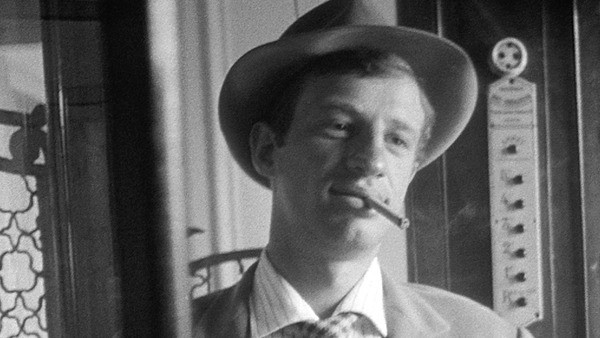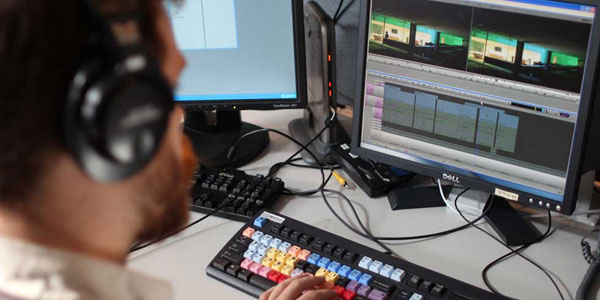The editing within Dr Caligari is unique and innovative because it reflects the unsettling atmosphere of the film. Iris wipes are frequently used to make the transition between scenes much smoother which continues the fraught tension. This technique is adapted and utilised throughout the film’s entirety and many versions are used. In this particular scene, a diamond shaped iris wipe is used to unsettle the audience by showing Cesare. Since we can only see him within the setting, fear is successfully achieved because everything else is blacked out. A fade is used to cut in and out of the scene, giving a smooth transition which is significant in retaining the tension created by the dark, ghoulish lighting. In this particular sense, the iris wipe is vital in keeping the scene as fluid as possible since it can be considered one of the most anticipated and exciting scenes so needs to run smooth. Since we are engaged in the film, the idea of darkness surrounding us ensures verisimilitude because not only does it make us feel part of the film but it represents how we are viewing the film from Francis’ mind and observing his story.

However, iris wipes are also used to represent a flashback. When Francis; the narrator retells the story of the fair, an iris wipe is used immediately after to physically show us a difference in scene which can represent the time period difference; signalling a flashback. The cut emphasises that this is a flashback because the camera’s iris is shut slowly then re-opened. This can represent the reopening of Francis’ ‘memories’ to narrate what happened that day. The physical change in scenes reminds us that there will be clear differences because we can see the change on screen between both the two scenes but also the different time frames. This is vital in showing that there is a clear difference to not confuse the audience as to whether the flashback is actually happening now. This the film does not follow a clear linear, and the flashback demonstrates that there is a time difference. The fluidity of this transition was very significant to show that there is actually a difference because it should not confuse the audience.

There is a lack of intercutting within the whole film due to the difficulty occurring with manual cutting, changing and addition of the film. This meant that it relied on fades and iris wipes to smoothly transition each scene to the next which was important for a horror film but especially for one which builds up tension. However, since the film is silent there are period where scenes cut to title cards which narrate and explain what is going on. This gives us background knowledge and also separates each scene clearly which is useful to ensure that the audience know what is happening and when. This is important because it ensures that we fully understand Francis’ story. As he is the narrator, we trust everything that he tells us without the dialogue to prove this.
Shots vary in length to keep the audiences engaged. For example, when Cesare is first introduced to the audience; the shot lingers on Dr Caligari and Cesare to ensure that the audience realize how significant the characters are. There is also the element of delaying the anticipation, as the audience eagerly await to see how the onscreen audience will react to Cesare. But the shot is dragged out so the tension builds as the audience continue to wait for the reaction. However, when it finally cuts to the audience, the frame only lasts a few seconds before flitting back to Caligari and Cesare. This could perhaps represent the significance of the two characters by getting the audience to focus on them. This is an edited and shortened version of the essay because of the high word count, the rest ids avaibile on my blog but not for film role 1 category*










